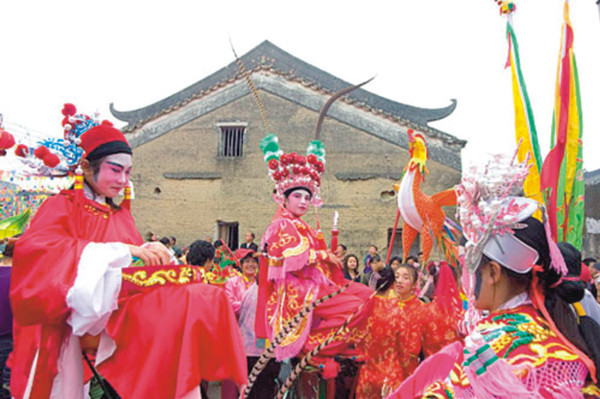
People dressed in traditional opera costumes perform during the Jinci Temple Fair in Taiyuan city. [Photo provided to chinadaily.com.cn]
First constructed during the Northern Wei Dynasty (368-534), Jinci Temple stands in memory of prince Ji Shuyu of the Western Zhou Dynasty (c. 11th century-771 BC) on the site of his kingdom's capital (Taiyuan). It is a monument to his commitment to improve the lives of his people.
The most famous building at Jinci Temple is the five-story Yi Jiang Hall, built in the Song Dynasty (960-1279). It is a grand structure decorated with yellow and green glazed edgework and carved wooden dragons coiled around the eight supporting pillars of its convex double-eave roof.
In the hall, statues of Yi Jiang, the wife of the founder of the Western Zhou Dynasty, and 42 of her maids provide a vivid depiction of myriad Song Dynasty characteristics.
Yi Jiang was given the title "Mother of the King" in the Ming Dynasty (1368-1644). The act of offering sacrifices to the Mother of the King on the second day of the seventh month of the Chinese lunar calendar has become a traditional festival since then; the event is called Sai Shenhui or the Jinci Temple Fair.
The traditional temple fair starts on the first day of the seventh month of the Chinese lunar calendar, when people living around Jinci Temple come to Yi Jiang Hall to burn incense and pray for blessings. Also, operas start being performed on Shujingtai, an ancient opera stage, and last for five days.
A shehuo show (a folk show celebrating the customs of traditional Chinese festivals) and various worship ceremonies are usually carried out until the fifth day of the seventh month of the Chinese lunar calendar.
Merchants usually gather for the celebration and traditional folk snacks, crafts, toys and sideshows can be seen at the temple fair.
